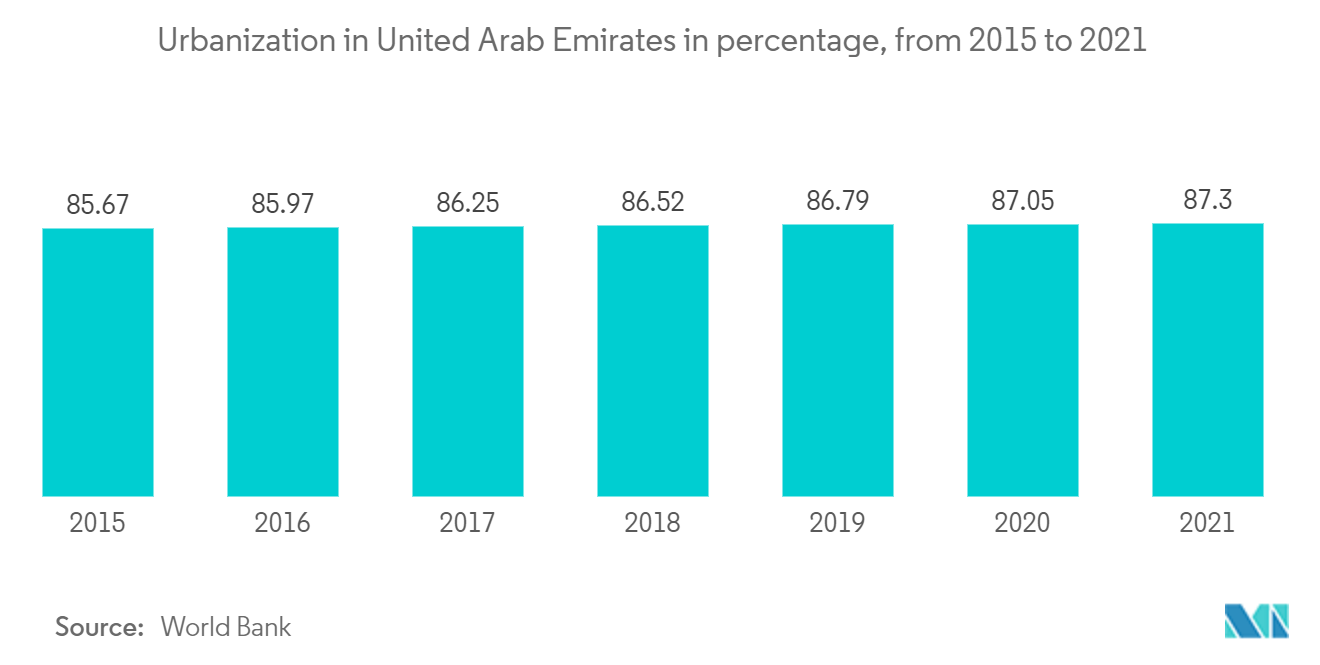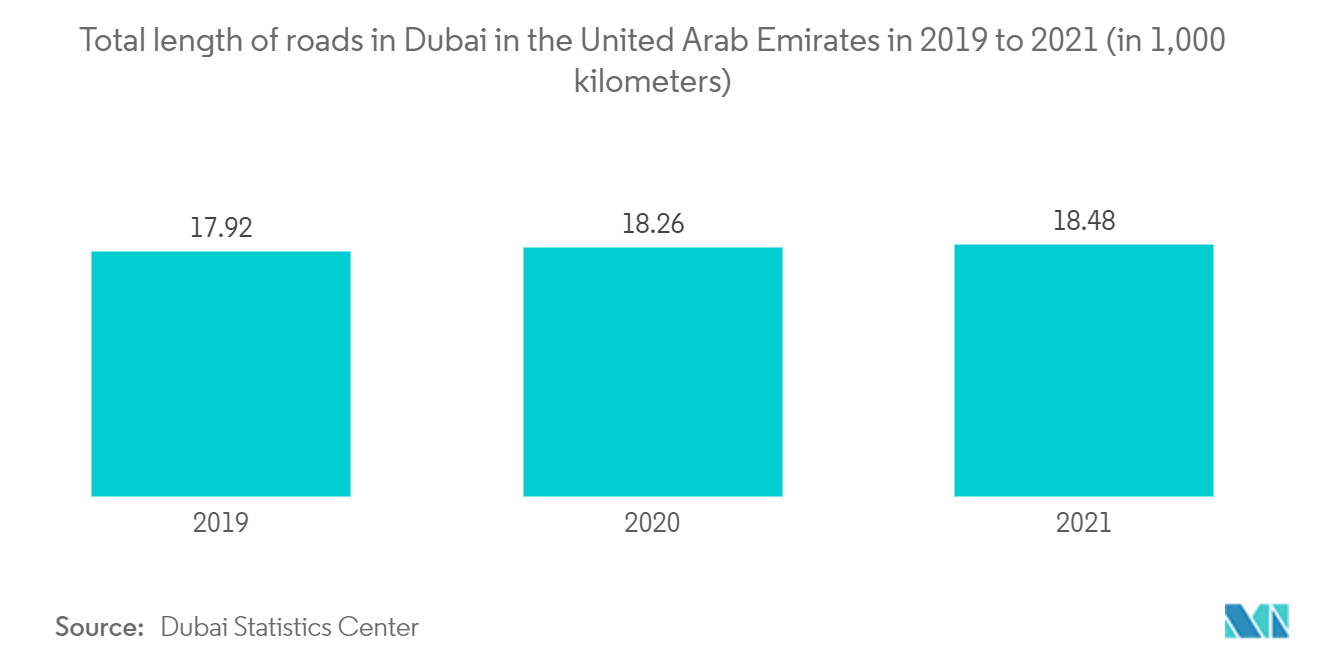Market Trends of UAE Transportation Infrastructure Construction Industry
This section covers the major market trends shaping the UAE Transportation Infrastructure Construction Market according to our research experts:
Growing Urbanization is Driving the Growth of the Market
Growing transportation infrastructure investment is supported by the rapid growth in the urban population. As per the World Bank, in 2021 the share of the urban population of UAE reached 87.3%. The current population of the United Arab Emirates is nearly 10 million. According to projections, the population will grow by another million within the coming 5 years.
As the share of the urban population grows, the growth of transport infrastructure is also required to connect them to the urban areas in UAE. In UAE's main urban seven cities, Nearly 11% of the total land of major urban cities is consumed by public spaces. These lands are important to relieve the pressures caused by the rising population in the cities.
Existing infrastructures in developed countries must be improved to improve resilience, improve the environment, and reduce maintenance costs. The government of UAE is making more investments in transportation infrastructure to cater transportation needs of the urban population. This is creating lucrative opportunities in the infrastructure segment of the UAE. Hence growing urban population boosts the revenue growth of the UAE transportation infrastructure construction market.

Government Initiatives for Infrastructural Development to Boost the Market
Investments are being made to increase transportation infrastructure activities and improve existing infrastructures, such as extending the roads and rails, planning new construction across the country, and improving damaged structures.
Transportation and road infrastructure development continues to be important across the country. In the year 2021, the total length of roads in Dubai is 18.5 thousand kilometers and the government is making more initiatives to increase the road network in the future. The UAE has several transportation and road infrastructure projects currently in the pipeline, such as the USD 2.7 billion Sheikh Zayed double-deck road scheme. There are also more unconventional transport projects, such as the USD 5.9 billion proposed hyperloop project between Dubai and Abu Dhabi.
The Shindagha Corridor project, led by Dubai's Roads and Transport Authority (RTA), involves the development of a 13km long road network along Sheikh Rashid Street, Al Mina, Al Khaleej, and Cairo streets in Dubai. The project has been broken down into five different phases, including a 295m bridge, with a total investment of AED 5 billion (USD 1.37 billion). All five phases are expected to be completed by 2027.
Etihad Rail, the UAE's national rail project, began in 2016 to connect 11 of the country's key centers of trade. The project is part of the larger UAE Railway Programme, which aims to enhance transportation across the seven emirates. It will be one of the largest single railway projects implemented in the world and forms the UAE component of the Gulf Cooperation Council (GCC) rail network. The railway infrastructure will become a vital part of the USD 100bn Gulf Cooperation Council (GCC) rail program. The GCC railway network will connect the UAE with Saudi Arabia, Qatar, Kuwait, Bahrain, and Oman and is expected to be ready by 2024. The railway is a total of 1,200km it has been estimated that it will require 47 million hours of work by 13,300 workers to be completed with an investment of AED 40bn (USD11bn).
Hence, the government initiatives for infrastructural development in UAE will boost the demand for the transportation infrastructure construction market during the forecast period.


